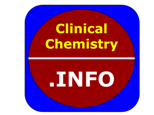Clin Chem Lab Med. 2025 Apr 24. doi: 10.1515/cclm-2025-0329. Online ahead of print.
ABSTRACT
OBJECTIVES: To explore the reasons behind the lack of commutability in protein solution reference materials (RMs) and seeks to eliminate these factors in order to develop commutable reference materials, using human insulin (hINS) as example, to meet the growing demand for standardization in in vitro diagnostics.
METHODS: A concept for development of commutable protein solution RMs by matrix matching, structural-activity analysis, higher order structure adjustment, active concentration measurement, and commutability verification was investigated. This concept was applied in the development of hINS solution candidate certified RMs (cCRMs). Bovine serum solution (7 %) was used for matrix matching and hINS-Zn2+ aggregates were found to be the key for commutability. hINS-Zn2+ aggregates were constructed in vitro and the presence of the aggregates was confirmed through circular dichroism spectroscopy and mass photometry. The active concentration of the aggregate solution was analyzed using surface plasmon resonance. Then, six levels of hINS solution cCRMs were developed and the commutability was evaluated using both CLSI EP14 and IFCC approaches.
RESULTS: The hINS solution cCRMs exhibited excellent homogeneity and remained stable for at least 6 months when stored at -70 °C. The relative uncertainties of these cCRMs ranged from 4.0 to 5.0 %. Both CLSI EP14 and IFCC commutability evaluations indicated good commutability between routine chemiluminescent immunoassay systems.
CONCLUSIONS: A new concept for developing commutable RMs with pure protein material, which avoids the challenges in developing commutable matrix RMs and should contribute to the standardization of clinical test results for proteins, was successfully applied to develop commutable hINS solution cCRMs.
PMID:40270241 | DOI:10.1515/cclm-2025-0329
